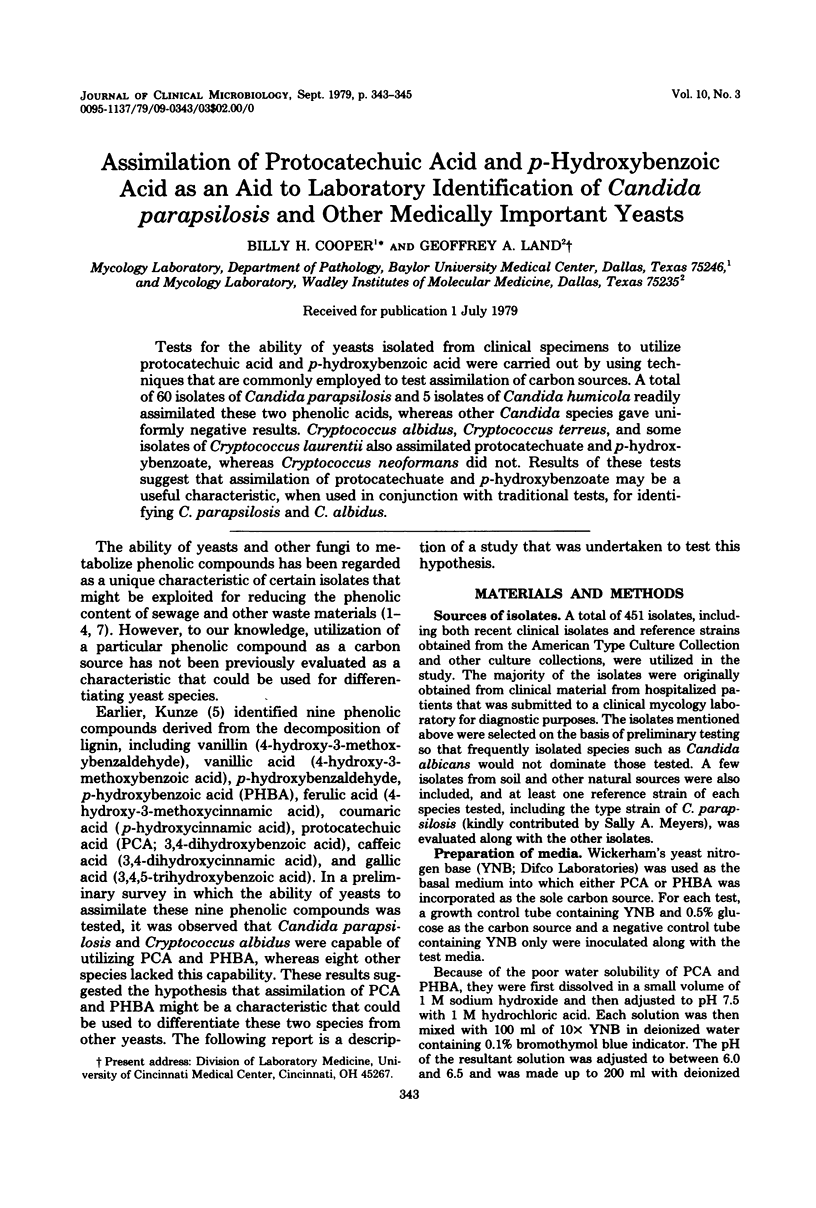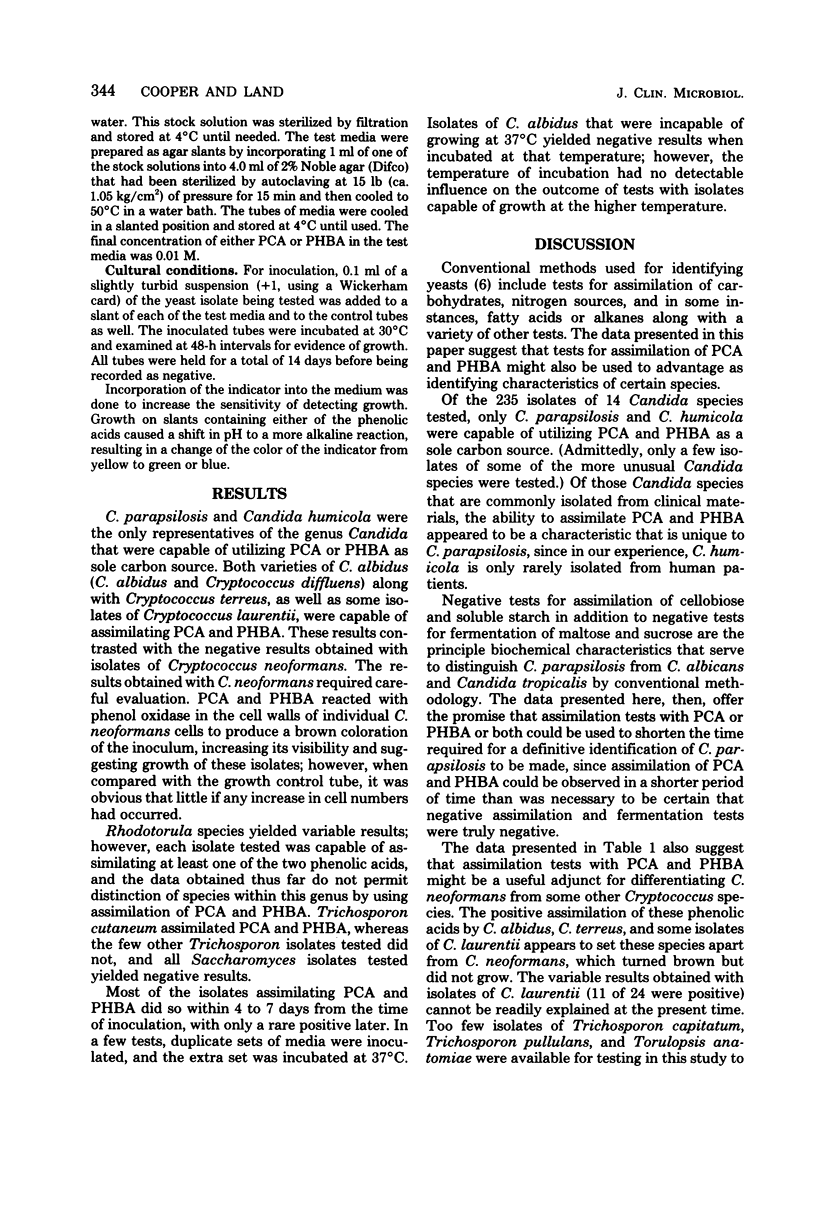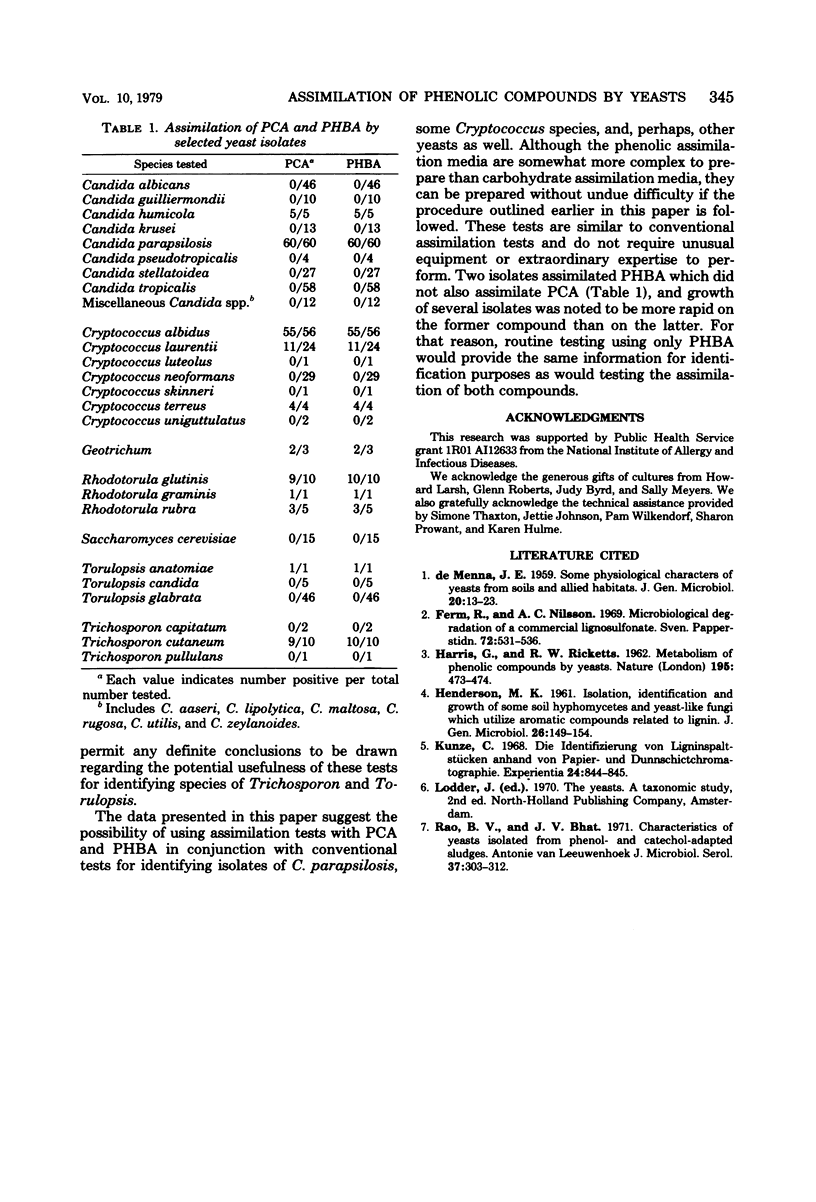Abstract
Test for the ability of yeasts isolated from clinical specimens to utilize protocatechuic acid and p-hydroxybenzoic acid were carried out by using techniques that are commonly employed to test assimilation of carbon sources. A total of 60 isolates of Candida parapsilosis and 5 isolates of Candida humicola readily assimilated these two phenolic acids, whereas other Candida species gave uniformly negative results. Cryptococcus albidus, Cryptococcus terreus, and some isolates of Cryptococcus laurentii also assimilated protocatechuate and p-hydroxybenzoate, whereas Cryptococcus neoformans did not. Results of these tests suggest that assimilation of protocatechuate and p-hydroxybenzoate may be a useful characteristic, when used in conjunction with traditional tests, for identifying C. parapsilosis and C. albidus.
Full text
PDF


Selected References
These references are in PubMed. This may not be the complete list of references from this article.
- DI MENNA M. E. Some physiological characters of yeasts from soils and allied habitats. J Gen Microbiol. 1959 Feb;20(1):13–23. doi: 10.1099/00221287-20-1-13. [DOI] [PubMed] [Google Scholar]
- HENDERSON M. E. Isolation, identification and growth of some soil hyphomycetes and yeast-like fungi which utilize aromatic compounds related to lignin. J Gen Microbiol. 1961 Sep;26:149–154. doi: 10.1099/00221287-26-1-149. [DOI] [PubMed] [Google Scholar]
- Rao B. V., Bhat J. V. Characteristics of yeasts isolated from phenol- and catechol-adapted activated sludges. Antonie Van Leeuwenhoek. 1971;37(3):303–312. doi: 10.1007/BF02218501. [DOI] [PubMed] [Google Scholar]


